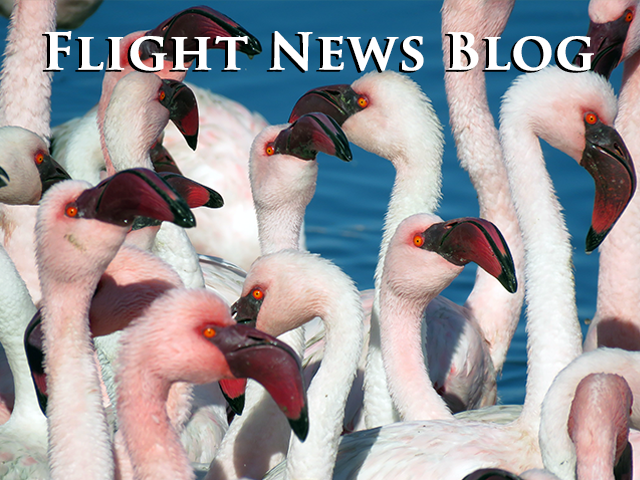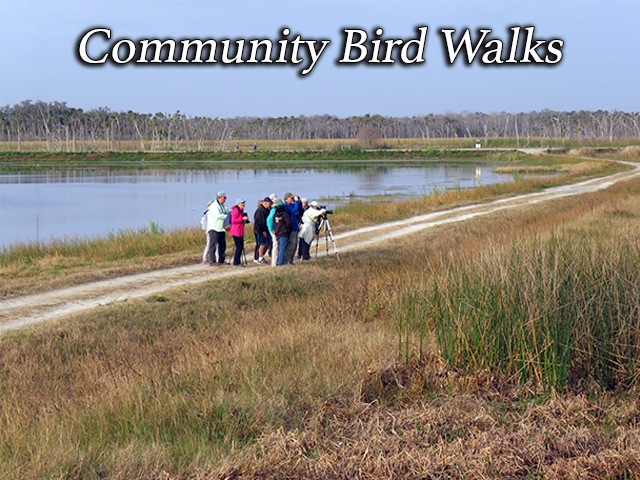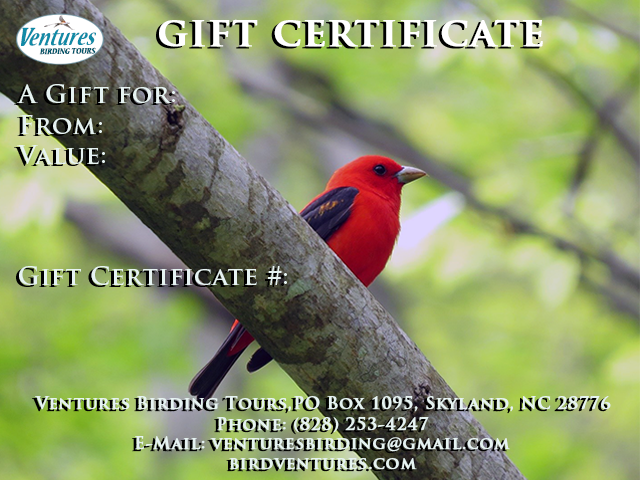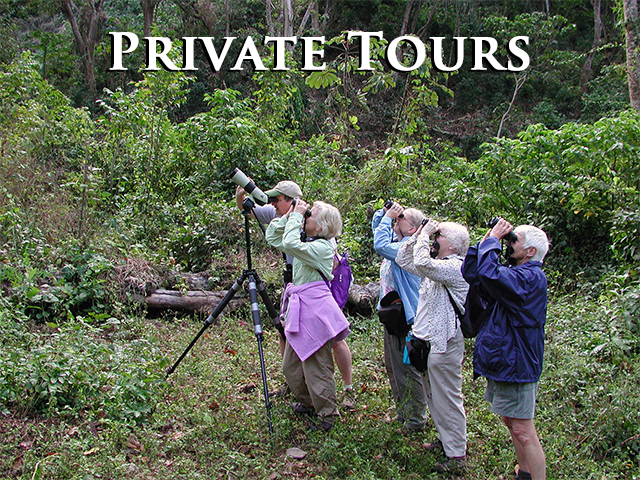Early Fall Migration at
Ridge Junction Overlook
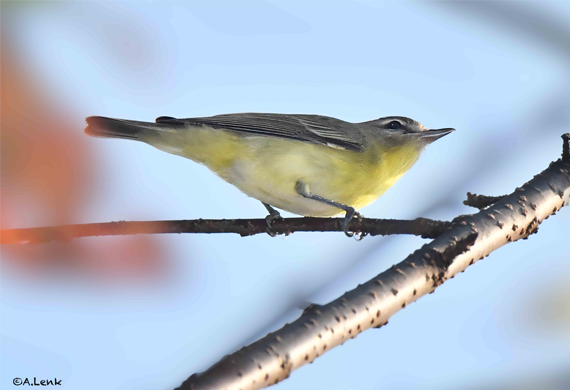
Buncombe & Yancey Counties, NC
September 4, 2020
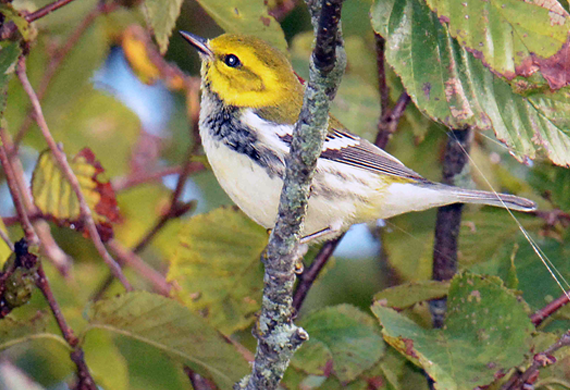
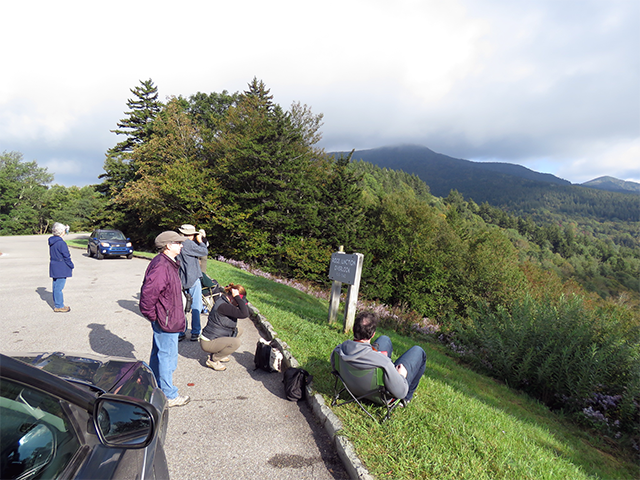
Register by clicking the ‘book now’ button above, or by contacting the Ventures office. We accept credit cards for an additional fee (2.9% for MC, Visa, Discover; 3.9% for AmEx), but you may also pay by bank transfer, cash, check, or money order. This Venture is limited to 10 participants.
Meeting Place: We will meet at 6 AM and leave from the Folk Art Center Parking Lot (milepost 382) on the Blue Ridge Parkway. Alternatively you can just meet us at Ridge Junction Overlook. The overlook is at Milepost 355.3, just after the entrance to Mt. Mitchell State Park.
Price: $55
Unfortunately, our picnic lunches are not currently included in our day trips (until further notice)
An easy and relaxing day sitting around and enjoying the fall passage of songbirds at Ridge Junction Overlook! Bring a chair or something comfortable to sit upon, as well as warm clothing and blankets, as it may be cool first thing in the morning.
Ridge Junction Overlook is one of the best spots in the Blue Ridge to enjoy the fall migration of warblers and other passerines. Late summer marks the very beginning of the fall migration for quite a few songbirds, and although the peak for many species is mid-September, we should still find a nice selection of southbound migrants in early September. Over the past few years there have been over 25 species of warblers seen at this spot, including Blackburnian, Magnolia, Mourning, Cerulean, Chestnut-sided, Hooded, Black-and-white, Black-throated Blue, Black-throated Green…the list is endless. Other species include Broad-winged and Sharp-shinned Hawks, Swainson’s, Wood, and Hermit Thrushes, Red-eyed, Blue-headed and Philadelphia Vireos, Rose-breasted Grosbeak, Scarlet Tanager and many more. This is also one of the most reliable spots in the mountains for Red Crossbills.
Join us for a relaxing morning while we enjoy the passage of birds through the gap and work on the identification of those ‘confusing fall warblers.’


